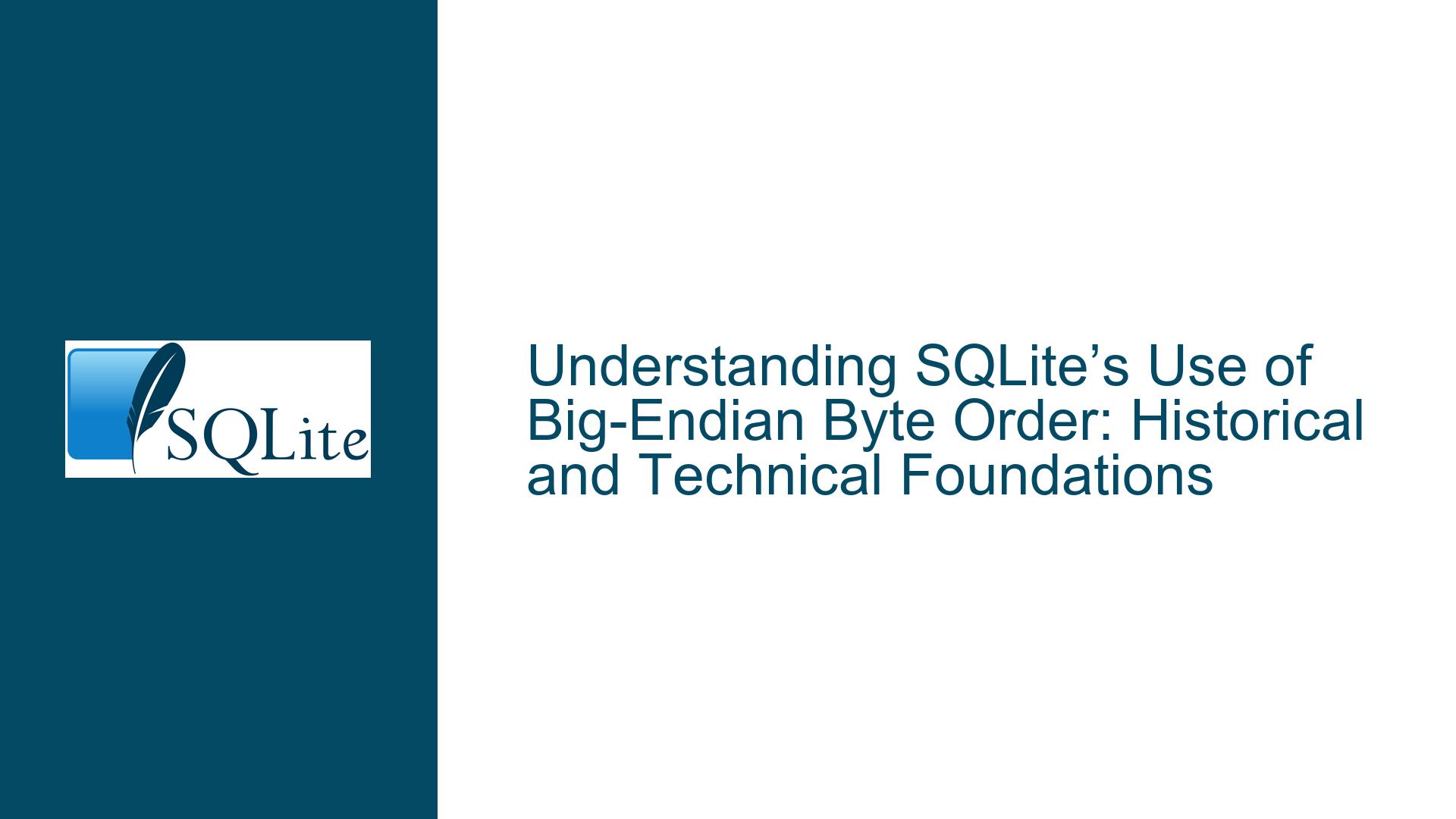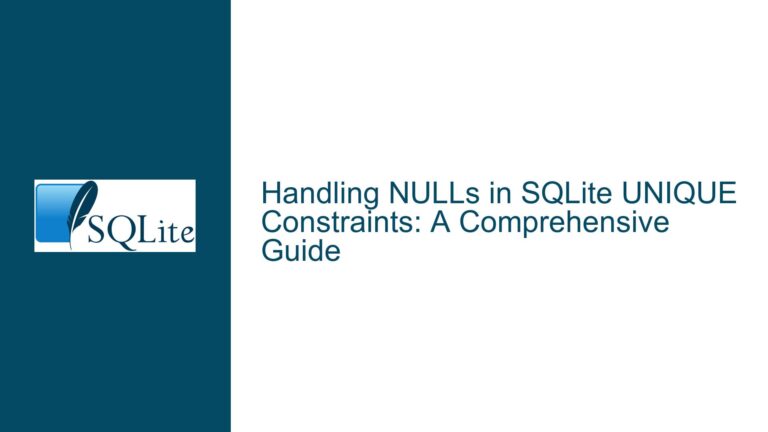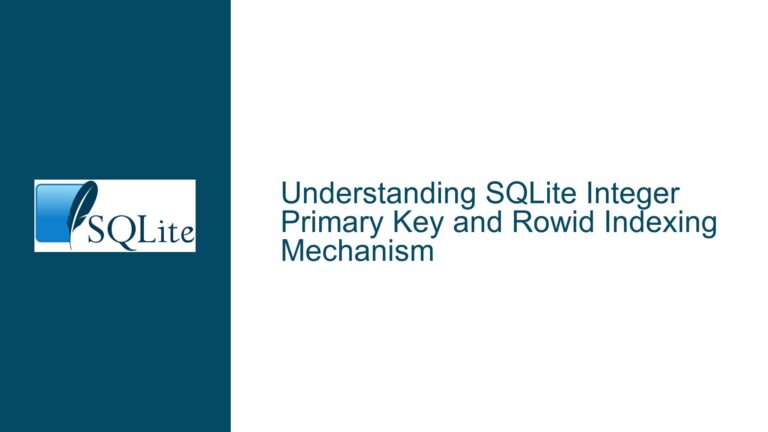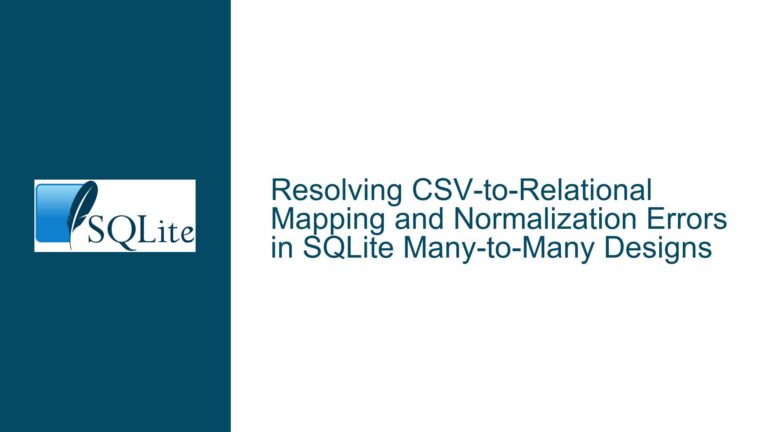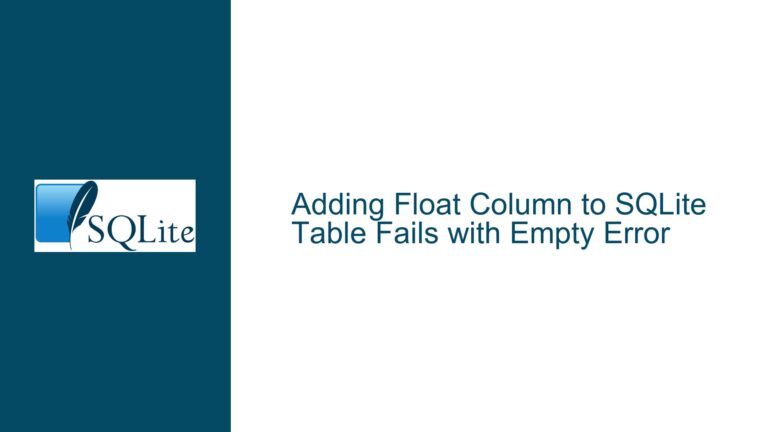SQLite’s Use of Big-Endian Byte Order: Historical and Technical Foundations
SQLite’s Big-Endian Architecture: Context, Rationale, and Implications
Historical and Technical Foundations of SQLite’s Byte Order Design
SQLite’s adoption of big-endian byte order for its internal data representation is rooted in a confluence of historical, technical, and pragmatic considerations. Big-endian byte order, where the most significant byte (MSB) of a multi-byte value is stored at the lowest memory address, was a dominant design choice during the formative years of computing and networking. SQLite, first released in 2000, emerged during a period when cross-platform compatibility and adherence to established standards were paramount. The decision to use big-endian aligns with network byte order conventions defined by early internet protocols like IP (RFC 791) and external data representation standards such as XDR (External Data Representation). These standards were heavily influenced by the hardware architectures and corporate players of the time, including Sun Microsystems’ SPARC processors and Motorola’s 68000 series, which inherently used big-endian byte ordering.
The choice of big-endian was not arbitrary. It reflects SQLite’s prioritization of portability and consistency across heterogeneous systems. By adopting a fixed byte order, SQLite ensures that database files remain interoperable across machines with differing native byte orders. For example, a SQLite database created on a big-endian system (e.g., an older Sun SPARC server) can be read without modification on a little-endian system (e.g., an x86-based PC). This design eliminates the need for runtime byte-swapping when reading or writing data, reducing computational overhead and simplifying the codebase. Additionally, big-endian’s alignment with network byte order simplified SQLite’s integration into networked environments, where data serialization and deserialization often adhere to internet standards.
However, the persistence of big-endian in SQLite is not merely a historical artifact. Modern systems, including ARM architectures, support bi-endian operation, yet SQLite retains big-endian for backward compatibility and to avoid introducing complexity in handling mixed-byte-order databases. The decision underscores a broader principle in software engineering: stability and predictability often outweigh marginal performance gains from aligning with native hardware conventions.
Factors Influencing SQLite’s Adoption of Big-Endian Byte Order
The adoption of big-endian byte order in SQLite can be attributed to four interrelated factors: historical precedent in networking standards, dominance of big-endian hardware during SQLite’s formative years, cross-platform compatibility requirements, and alignment with serialization protocols.
Networking Standards and RFCs:
The internet’s foundational protocols, including IP (Internet Protocol), TCP (Transmission Control Protocol), and UDP (User Datagram Protocol), mandate big-endian byte order for multi-octet fields in packet headers. This convention, known as network byte order, was formalized in RFC 791 (1981) to ensure consistent interpretation of data across diverse systems. SQLite’s use of big-endian mirrors this approach, enabling seamless data interchange in networked applications. For instance, when SQLite is used in embedded systems that communicate over networks, storing data in big-endian avoids the need for repeated byte-swapping during transmission.Hardware Ecosystem of the 1980s–1990s:
During the 1980s and early 1990s, big-endian architectures dominated high-performance computing and workstation markets. Sun Microsystems’ SPARC processors, Motorola’s 68000 series (used in early Macintosh computers and Sun workstations), and IBM’s POWER/PowerPC architectures all employed big-endian byte order. These systems were widely used in academia, research, and enterprise environments where SQLite’s predecessors (e.g., embedded databases) were likely to be deployed. By aligning with big-endian, SQLite ensured optimal performance on these platforms, as data could be read directly from memory without conversion.Cross-Platform Data Portability:
SQLite’s design philosophy emphasizes serverless, zero-configuration operation across disparate systems. A database file written on one architecture must be readable on another without modification. Fixed byte order eliminates ambiguity: if SQLite used the native byte order of the host system, database files would become incompatible when moved between big-endian and little-endian machines. By standardizing on big-endian, SQLite delegates byte-swapping responsibilities to the host system only when necessary, ensuring data integrity.Serialization and External Data Representation (XDR):
Sun Microsystems’ XDR standard, introduced in the 1980s as part of the Network File System (NFS), prescribed big-endian for data serialization to facilitate cross-platform file sharing. XDR’s influence extended beyond Sun; it became a de facto standard for RPC (Remote Procedure Call) mechanisms and distributed systems. SQLite’s adoption of big-endian aligns with these practices, simplifying integration with systems that rely on XDR for data marshaling.
Addressing Compatibility Concerns and Modern Implications
While SQLite’s use of big-endian is well-justified historically, developers working in mixed-endian environments must account for byte order when interacting with SQLite at a low level. Below are key considerations and strategies for ensuring compatibility:
1. Data Serialization and Deserialization:
When reading or writing binary data directly to/from SQLite (e.g., BLOB fields), applications must handle byte order explicitly. For example, an integer stored in a BLOB will be in big-endian format. On a little-endian system (e.g., x86), the application must convert the byte order during read/write operations.
Example:
// Writing an integer to a BLOB in big-endian format (C code):
uint32_t value = 1234;
uint8_t buffer[4];
buffer[0] = (value >> 24) & 0xFF; // MSB first
buffer[1] = (value >> 16) & 0xFF;
buffer[2] = (value >> 8) & 0xFF;
buffer[3] = value & 0xFF; // LSB last
sqlite3_bind_blob(stmt, 1, buffer, sizeof(buffer), SQLITE_STATIC);
2. Leveraging SQLite’s Type Conversion Functions:
SQLite’s dynamic type system automatically handles integer and floating-point conversions when data is accessed via high-level APIs (e.g., sqlite3_column_int()). Developers should rely on these abstractions unless directly manipulating binary data. This minimizes byte-order-related errors.
3. Testing Across Architectures:
Applications targeting both big-endian and little-endian systems (e.g., ARM-based IoT devices and x86 servers) should include cross-platform testing. Emulators or CI/CD pipelines with multi-architecture support can validate byte-order handling. Tools like QEMU enable testing on non-native endianness.
4. Avoiding Premature Optimization:
While converting data to native byte order might seem inefficient, modern CPUs perform byte-swapping operations (e.g., via htonl(), ntohl()) with minimal overhead. Optimizing for readability and correctness is preferable to micro-optimizations that compromise portability.
5. Documenting Byte-Order Assumptions:
Code that interacts with SQLite’s binary format should explicitly document byte-order assumptions. For example, a file format specification using SQLite as a container might state: “All multi-byte numeric values are stored in big-endian (network) byte order.”
In conclusion, SQLite’s use of big-endian byte order is a deliberate design choice shaped by historical norms, hardware trends, and interoperability requirements. While modern systems increasingly favor little-endian architectures, SQLite’s commitment to big-endian ensures enduring cross-platform compatibility, aligning with its philosophy of simplicity and reliability. Developers interfacing with SQLite at the binary level must remain vigilant about byte order but can leverage SQLite’s abstractions to mitigate complexity.
